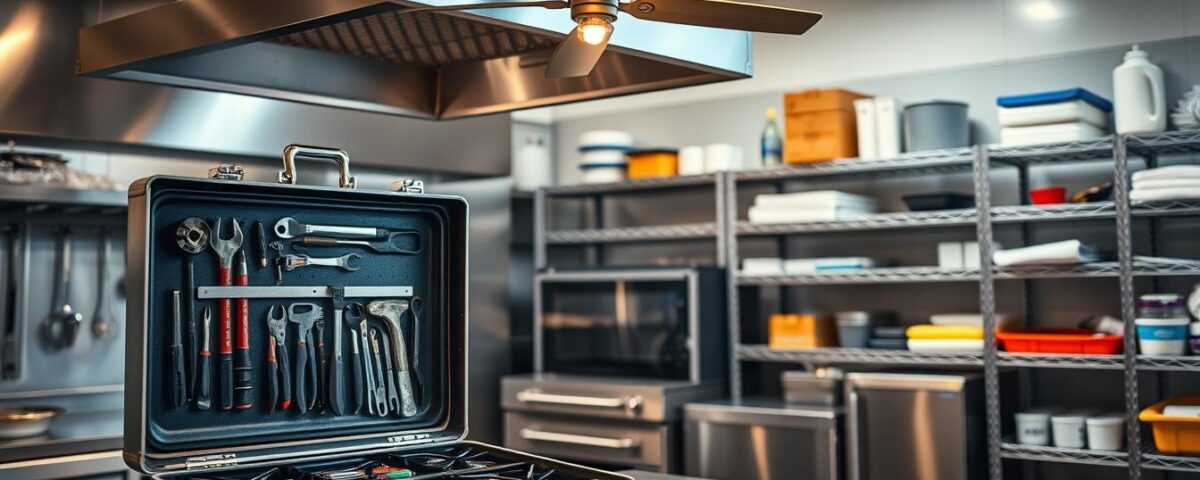
5 Concept Mistakes That Hurt Your Restaurant’s Identity
August 29, 2025
Ghost Kitchen Failure Stories—And What You Can Learn from Them
August 30, 2025I’ve seen it happen to the best of us – unknowingly falling into supplier traps that silently drain our profits. As someone who’s been in the trenches of the industry, I’ve personally experienced the financial hit of overlooking critical maintenance for kitchen equipment, like a clogged grease trap.
A recent study revealed that many businesses are losing thousands of dollars annually due to these avoidable pitfalls. The alarming reality is that these losses can be prevented with the right knowledge. By understanding the common pitfalls, you can protect your bottom line and ensure your kitchen operates efficiently.
So, what are these costly traps, and how can you avoid them? In this article, I’ll share the insider knowledge you’ve been looking for to make smarter decisions and potentially save thousands of dollars.
Key Takeaways
- Identify common supplier traps that cost businesses thousands of dollars annually.
- Learn how to avoid overpaying for essential kitchen equipment.
- Understand the importance of regular maintenance for kitchen equipment.
- Discover how to protect your business’s bottom line from hidden money drains.
- Gain insider knowledge to make smarter supplier decisions.
Understanding Restaurant Supplier Traps and Their Financial Impact
Understanding the traps set by restaurant suppliers is crucial for maintaining a healthy financial status in my establishment. The choices I make regarding suppliers can have a significant impact on my operational costs and overall profitability.
The Hidden Costs of Poor Supplier Decisions
Investing in quality equipment, such as grease traps made from durable materials like stainless steel, can significantly reduce long-term operational costs. For instance, every model from Thermaco comes with advanced features like digital control interfaces and automatic skimming abilities, ensuring efficient operation.
Some key benefits of quality equipment include:
- Reduced maintenance costs due to fewer breakdowns
- Improved energy efficiency, lowering utility bills
- Better warranties and service agreements, minimizing downtime
Why Quality Equipment Matters for Your Bottom Line
Upgrading to commercial-grade kitchen equipment, including properly sized grease interceptors, not only improves food consistency and staff productivity but also pays for itself within 1-2 years through reduced operational costs.
| Equipment Type | Initial Cost | Long-term Savings |
|---|---|---|
| Basic Grease Trap | $500 | $0 |
| Premium Grease Trap | $1,000 | $500/year |
By choosing the right supplier and equipment, I can avoid costly traps and protect my restaurant’s financial health.
Pricing and Product Selection Traps
As I navigate the complex world of restaurant equipment suppliers, I’ve come to realize that making informed purchasing decisions is crucial to avoiding costly traps.
When selecting equipment, it’s essential to consider both the price and the product’s quality to avoid falling into common traps.
Trap #1: Overpaying for Essential Kitchen Equipment
I’ve learned that overpaying for essential kitchen equipment can significantly impact my bottom line. To avoid this trap, I always compare prices using a commercial kitchen equipment price comparison to ensure I’m getting the best deal.
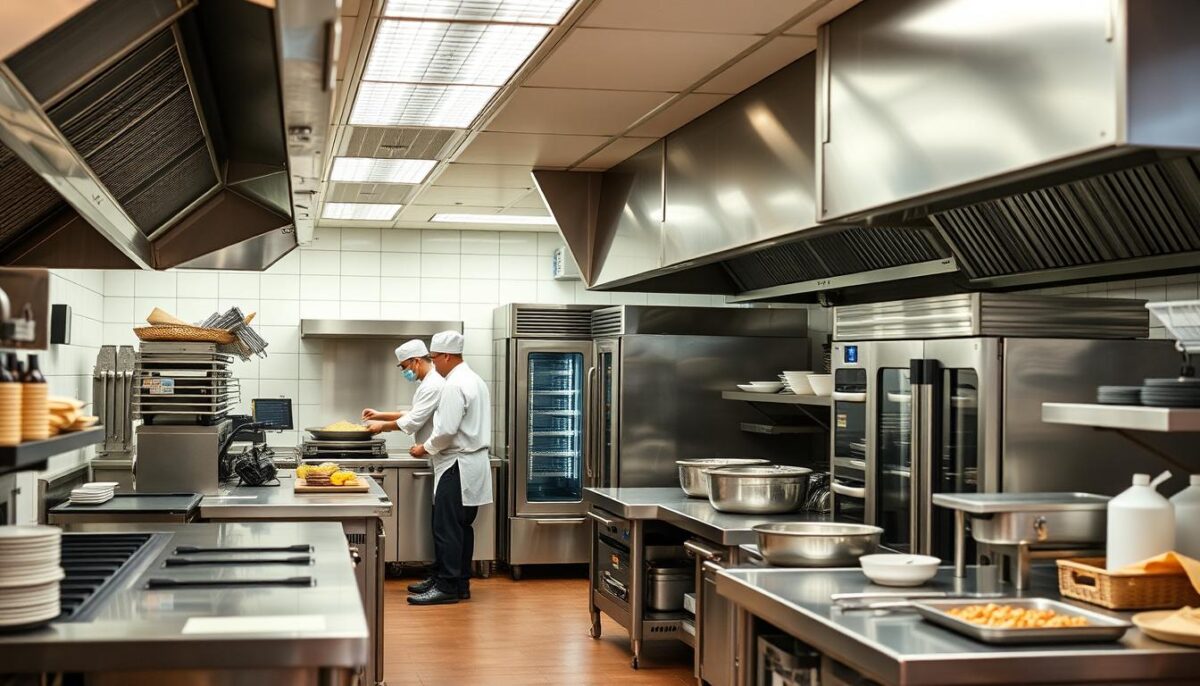
Trap #2: Choosing Inadequate Grease Management Systems
Selecting the right grease management system is critical. I use a restaurant grease trap sizing guide to determine the correct size for my kitchen, ensuring that I’m not caught off guard by inadequate GPM ratings.
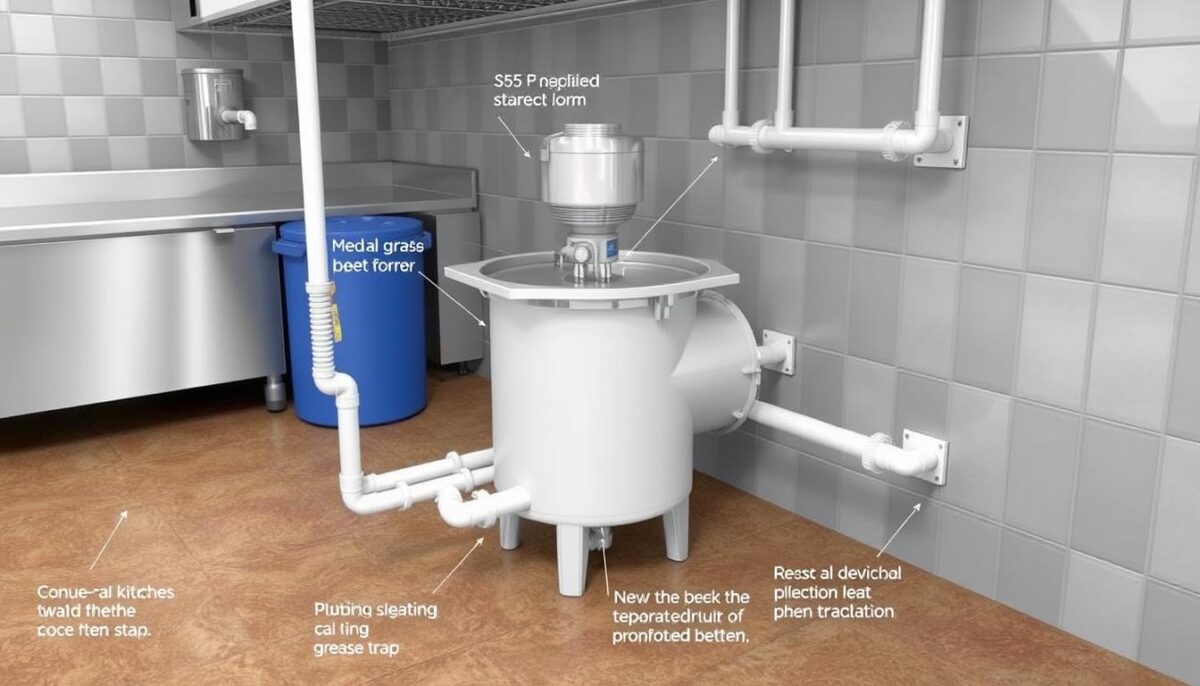
Trap #3: Falling for Low-Quality Materials and Construction
I’ve discovered that low-quality materials and construction can lead to premature equipment failure. To avoid this, I look for commercial kitchen equipment quality indicators such as fully welded seams and commercial-grade stainless steel.
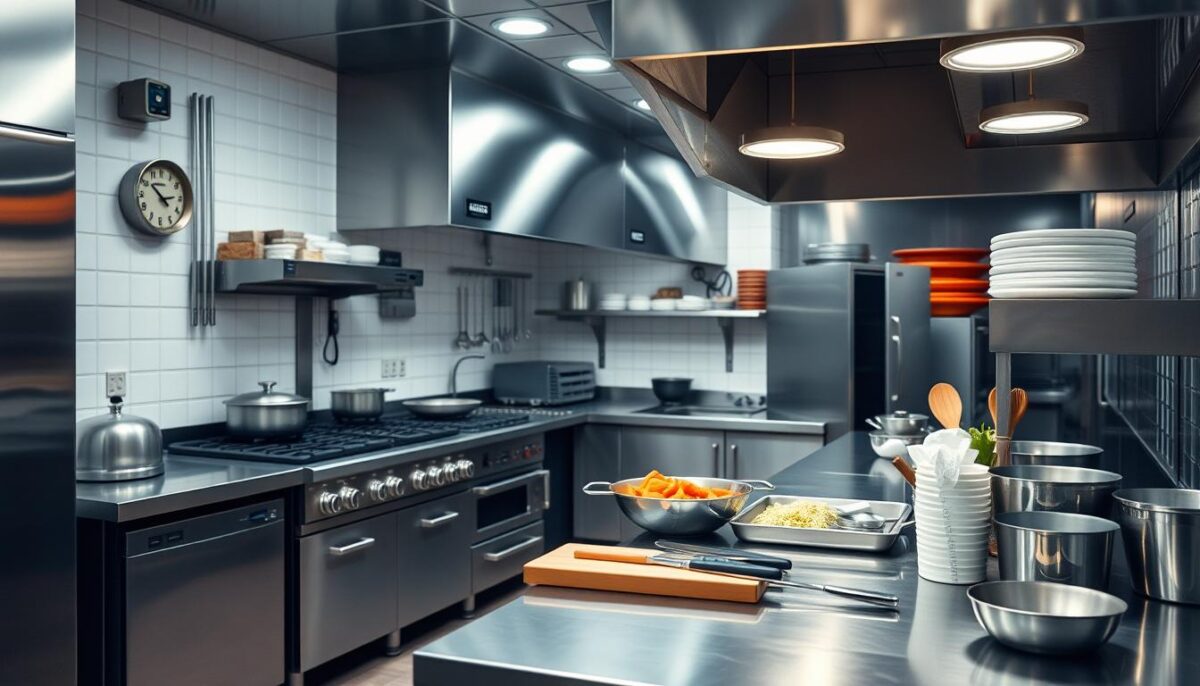
By being aware of these pricing and product selection traps, I can make informed decisions that protect my profits and ensure the longevity of my equipment.
Maintenance and Compliance Traps
To avoid costly surprises, restaurant owners must consider the maintenance and compliance implications of their equipment choices. Suppliers often focus on the initial sale, overlooking the long-term costs and regulatory requirements associated with the equipment.
Trap #4: Ignoring Long-Term Maintenance Requirements
Ignoring long-term maintenance requirements can lead to unexpected expenses and operational downtime. For instance, grease interceptors require regular maintenance to function effectively and prevent costly backups in sewer lines. I ensure that my suppliers provide clear guidance on maintenance needs to avoid these issues.
Trap #5: Missing Out on Automation Benefits
Missing out on automation benefits can result in inefficient operations. Automatic grease trap systems can significantly reduce manual maintenance and improve compliance with health regulations. I look for suppliers who offer automated solutions that can streamline my operations.
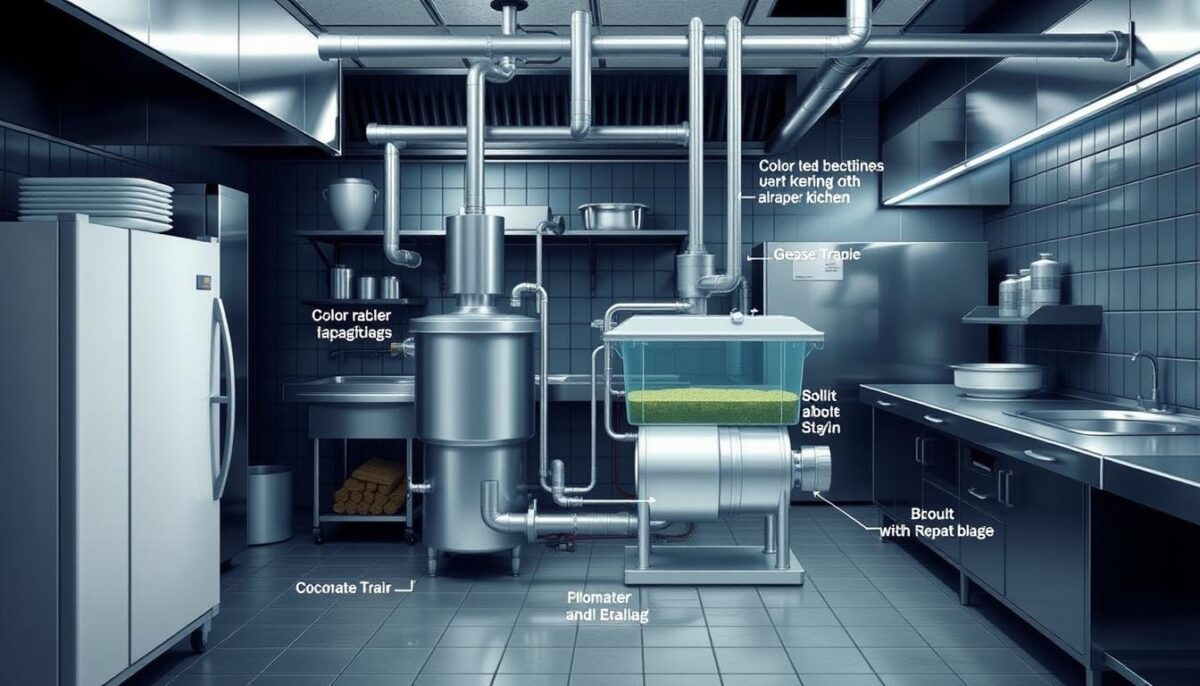
Trap #6: Overlooking Regulatory Compliance Issues
Overlooking regulatory compliance issues can lead to hefty fines and reputational damage. I’ve learned that non-compliant equipment, such as grease traps that don’t meet local GPM requirements, can result in significant penalties. When purchasing equipment, I verify that it meets all current regulatory standards to avoid these traps.
By staying informed about local plumbing codes and food safety regulations, I can avoid investing in equipment that doesn’t satisfy legal requirements. Proper documentation of equipment specifications, particularly GPM ratings for grease interceptors, is essential during regulatory inspections.

Conclusion: Avoiding Restaurant Supplier Traps to Protect Your Profits
As a seasoned restaurateur, I’ve developed a keen sense of how to identify and avoid supplier traps that can drain profits. By being aware of the common pitfalls and taking proactive steps, I’ve been able to maintain a healthy bottom line.
Educating myself about industry standards and specifications for restaurant equipment has been my best defense against costly supplier traps. I’ve learned to create detailed requirement lists before speaking with suppliers, allowing me to compare products effectively and avoid unnecessary features.
Developing relationships with multiple suppliers has given me leverage in negotiations and access to competitive pricing on essential kitchen equipment and food service products. I now factor in energy efficiency, maintenance requirements, and expected lifespan when calculating the true cost of equipment, rather than focusing solely on the purchase price.
By investing in quality stainless steel equipment and properly sized systems, I’ve consistently achieved better long-term value than with budget alternatives. Consulting with other restaurant owners about their experiences with different types of equipment and suppliers has also helped me avoid costly mistakes.
The variety of options available for each type of restaurant equipment means there’s always a solution that balances quality and affordability. By avoiding the six common supplier traps outlined in this article, I’ve been able to redirect thousands of dollars from unnecessary expenses back into improving my food quality, customer experience, and marketing efforts.
In conclusion, being informed and proactive is key to avoiding supplier traps and protecting your profits. By following these strategies, you can ensure a successful and profitable restaurant operation.
FAQ
What is a grease interceptor, and how does it work?
A grease interceptor is a plumbing device designed to capture grease, oil, and food particles before they enter the sewer system. It works by slowing down the flow of wastewater, allowing the grease and debris to separate and float to the top, where they can be easily removed.
How often should I clean my grease trap?
The frequency of cleaning your grease trap depends on the size of the trap, the amount of grease and food waste generated by your kitchen, and local regulations. Typically, it’s recommended to clean your grease trap every 1-3 months to prevent clogs and ensure compliance.
What are the benefits of using a stainless steel grease interceptor?
Stainless steel grease interceptors are durable, resistant to corrosion, and easy to clean. They also provide a high level of gpm (gallons per minute) flow rate, making them suitable for high-volume kitchens.
How do I choose the right size grease interceptor for my kitchen?
To choose the right size grease interceptor, consider factors such as the size of your kitchen, the number of meals served, and the type of cooking equipment used. It’s also essential to consult with a plumbing professional to ensure compliance with local regulations and to determine the correct gpm rating.
What are the consequences of not maintaining my grease trap?
Failure to maintain your grease trap can lead to clogs, backups, and costly repairs. Additionally, neglecting grease trap maintenance can result in fines and penalties for non-compliance with local regulations.
Can I install a grease interceptor myself?
While it’s possible to install a grease interceptor yourself, it’s highly recommended to hire a professional plumber to ensure proper installation, sizing, and compliance with local regulations.
